

Mudlarking in the Thames: Finding Treasures in London’s River
Mudlarking along the Thames is a unique and fascinating way to explore the history of London. This ancient practice involves searching for treasures and artifacts on the banks of the River Thames. Mudlarking has been a popular pastime for centuries, and the Thames has yielded some incredible finds over the years, including Roman coins, medieval pottery, and even human remains.
London’s River Thames is one of the most iconic waterways in the world, and mudlarking provides a unique opportunity to explore its rich history. The practice involves scouring the foreshore of the river at low tide, searching for objects that have been washed up by the water. Mudlarkers use a variety of tools to sift through the mud, including metal detectors, trowels, and sieves.
As mudlarking has gained in popularity in recent years, there are now a number of guided tours available that provide a fascinating insight into the history of the Thames. These tours are led by expert guides who are passionate about the history of the river and the objects that can be found on its banks. Whether you are a history buff or simply looking for a unique way to explore London, mudlarking along the Thames is an experience not to be missed.
Getting Started with Mudlarking
https://www.youtube.com/watch?v=Fjgw1BZrDek&embed=true
If you are looking for a unique and exciting way to explore the history of London, mudlarking may be just the thing for you. Mudlarking is the practice of searching the Thames riverbed for historical artifacts and treasures. In this section, we will cover the basics of getting started with mudlarking, including understanding mudlarking, essential mudlarking gear, legal requirements and safety.
Understanding Mudlarking
Mudlarking is a fascinating hobby that allows you to discover the history of London in a unique and exciting way. It involves searching the riverbed at low tide for items that have been lost or discarded over the years. Some of the most common items that you might find while mudlarking include pottery, coins, buttons, and other small artifacts.
Essential Mudlarking Gear
Before you start mudlarking, you will need to make sure that you have the right gear. Some of the essential items that you will need include a sturdy pair of boots or shoes with good traction, gloves, a digging tool, and a container to hold your finds. You may also want to consider wearing waterproof clothing, as the riverbed can be slippery and wet.
Legal Requirements and Safety
It’s important to note that mudlarking is not allowed without a permit from the Port of London Authority. You can apply for a permit online, and it’s important to follow the rules and regulations set out by the Port of London Authority to ensure that you are mudlarking safely and legally.
When mudlarking, it’s important to be aware of the tides and to stay safe. The riverbed can be slippery, and the water can rise quickly, so it’s important to keep an eye on the tide tables and to be aware of your surroundings at all times. Additionally, it’s important to wear appropriate safety gear, such as gloves and sturdy shoes, to protect yourself from any sharp or dangerous objects that you may encounter while mudlarking.
In summary, mudlarking is a unique and exciting way to explore the history of London. By understanding the basics of mudlarking, having the right gear, and following the legal requirements and safety guidelines, you can have a safe and enjoyable experience while discovering the treasures of the Thames riverbed.
Historical Insights and Finds
Mudlarking in the Thames is a fascinating way to explore London’s rich history. Over the years, mudlarks have uncovered a variety of significant discoveries, including rare artifacts and treasures that offer a glimpse into the past.
Significant Mudlarking Discoveries
One of the most significant mudlarking discoveries in recent years was a rare Roman statue head found on the Thames foreshore near London Bridge. The head is believed to be from a one-and-a-half-times life-size statue that would have once been a familiar landmark in Londinium. Another notable discovery was a medieval gold ring found by a mudlark in the Thames near the Tower of London. The ring is believed to date back to the 14th century and is engraved with a depiction of St. George.
Mudlarks have also uncovered a variety of other artifacts, including pottery, clay pipes, coins, bones, and buttons. Many of these finds date back to the Victorian era and the 18th century, offering a unique insight into life in London during these periods.
Identifying Finds
Identifying mudlarking finds can be a challenging task, but there are some key tips to follow. For example, pottery can be identified by looking for specific patterns and designs, while clay pipes can be dated by examining their shape and stem bore. Coins can also offer clues to their age and origin, with many mudlarks using online resources to help identify their finds.
Overall, mudlarking in the Thames offers a unique opportunity to explore London’s rich history and uncover rare treasures and artifacts. With a little patience and some knowledge of identifying finds, mudlarks can uncover a wealth of fascinating insights into the city’s past.
Mudlarking Etiquette and Best Practices
Responsible mudlarking.
Mudlarking is a fun and exciting activity, but it is important to do it responsibly. The Thames is a living river, and its foreshore is home to a variety of wildlife. Therefore, it is essential to respect the environment and not to cause any damage.
When mudlarking, always make sure to leave the foreshore as you found it. Take all your litter with you and dispose of it properly. Be mindful of your surroundings and avoid disturbing any wildlife.
It is also important to be aware of the laws and regulations surrounding mudlarking. The Portable Antiquities Scheme (PAS) is a voluntary scheme that records archaeological objects found by members of the public in England and Wales. If you find something of archaeological interest, you should report it to the PAS. The scheme helps to build a better understanding of the past and ensures that important finds are preserved for future generations.
Reporting Your Finds
Reporting your finds is not only responsible but can also be rewarding. The Museum of London and Finds Liaison Officers (FLOs) can help identify and record your finds. They can also provide information on the history and significance of the items you find.
If you find something that may be of human origin, such as bones or teeth, you must report it to the coroner. This is a legal requirement, and failure to do so may result in a fine or imprisonment.
In summary, mudlarking can be a fascinating and rewarding activity, but it is important to do it responsibly. Remember to respect the environment, follow the laws and regulations, and report any significant finds. By doing so, you can help preserve our history and contribute to our understanding of the past.
Joining the Mudlarking Community
If you’re interested in mudlarking, you’re not alone! There is a vibrant community of mudlarks in the Thames area, and joining them is easier than you might think.
Connecting with Fellow Mudlarks
One of the best ways to get started in the mudlarking community is by connecting with other mudlarks. Social media is a great place to start. There are several Facebook groups dedicated to mudlarking, such as the “Thames and Field Mudlarking” group. Here, you can connect with other mudlarks, share your finds, and ask questions.
Another way to connect with fellow mudlarks is by joining a mudlarking tour. These tours, led by experienced mudlarks like Lara Maiklem and Steve Brooker, are a great way to learn about the history of the Thames and get some hands-on experience with mudlarking. The Thames Explorer Trust offers a variety of mudlarking tours throughout the year.
Participating in Organized Mudlarking Events
In addition to tours, there are also organized mudlarking events that you can participate in. These events are often organized by local groups or charities, and they offer a fun and social way to get involved in the mudlarking community while also doing some good.
One example of an organized mudlarking event is the annual Thames Festival Foreshore Clean Up . This event, organized by the Thames Festival Trust, brings together volunteers to clean up the foreshore and collect any interesting finds along the way.
Overall, joining the mudlarking community is a great way to connect with others who share your passion for history and exploration. Whether you connect online or in person, there are plenty of opportunities to get involved and start your own mudlarking adventure.
Last Updated on December 5, 2023 by Cool Rad Weird
Archaeology
- Early Modern

Mudlarking requires a permit from the Port of London Authority (PLA), and permit-holders must follow rules on exactly where and how they search. They are prohibited from selling finds for personal gain. The issuing of permits was paused in November 2022 after a rush of applicants, fuelled partly by popular books on mudlarking and social media posts. For now, the PLA says people who don’t already hold permits can visit the foreshore but cannot search it “in any way for any reason”. However, it is still possible to search without a permit by doing an approved guided tour (details below) and leaving any finds on the foreshore.
What motivates mudlarks?
Nicola White, an artist and mudlark who runs the Tideline Art YouTube channel , says: “I grew up in Cornwall and always used to like collecting things, whether it was on the beach or in the garden. Then, when I moved to London — close to Greenwich — in about 1998, I found myself down on the foreshore. It was a bit like a replacement beach because I really missed the beaches in Cornwall. I started to pick up bits of pottery and glass. Then I found a coin and I suddenly realised that there was this history to be to be found down there, and so I became fascinated with it.
“The coin wasn’t terribly old — it was a George V, I think — and I held it and I thought the last person who held it lived 100 years or so ago, and it really inspired me and got my imagination going. So I became a lot more interested in history. Because everything I find, to this day, I’m really motivated to learn about. Beforehand, I wasn’t particularly mad about history.”

It is personal, tangible connections to the past that grab her. For instance, most of us have heard of Pudding Lane as the street where the Great Fire of London started in Thomas Farriner’s bakery in 1666. A few years ago, White found a trader’s token issued in 1657 by Brian Appleby who owned a tavern on that very street. As she tweeted at the time: “Farriner’s bakery was close to Appleby’s Maydenheade & it thrills me to think that this token was once held by someone who probably knew Farriner.”
Simon Clarke, director of the Thames Explorer Trust, which organises guided mudlarking tours, says: “When you go to a museum, the objects are behind glass and have been found for you. Here, you find them yourself and you never know what you will find. It’s the very fact that you are discovering something that has been unearthed for the first time. Because Thames Clippers and some of the larger [river] vessels do the scouring for us — they overturn new things every day. It’s not only finding objects but the thrill of working out where they’re from.”
What can mudlarks find?
The anaerobic condition of the Thames mud means that items lost or dumped in the river hundreds or thousands of years ago can emerge, through erosion, in pristine condition. The variety of finds is extraordinary and reflects London’s far-reaching trading connections. Among frequent finds are clay pipes or fragments of them — some dating to the lifetime of Sir Walter Raleigh who popularised Virginia tobacco in the 16th century. Sherds of Roman pottery and chunks of Roman roof tile are also common in places, the latter occasionally marked with the paw prints of cats or dogs that walked on the wet clay. Meanwhile, depending on the details, blue and white sherds might be relatively recent Willow Pattern, Delftware or export porcelain hand-painted in China 300 years ago.

Pieces such as Roman coins, medieval pilgrim badges brought back from shrines, and mourning rings inscribed with names and dates are rarer and coveted. Although some mudlarks target such finds using metal detectors, many succeed in finding small metal objects eyes-only. White says: “For me, mudlarking is an experience of searching and being in the moment and wandering along, looking. If you’ve got a detector, there’s so much metal down there, it’s beeping all over the place. You really have to know what you’re doing.”
She adds that people should have realistic expectations. “A problem is that there are so many social media posts that you might get the impression that you can just wander down and it’s a smorgasbord of finds — and it’s really not like that. It’s important to still see the magic in a few pipe stems, a bit of pottery, and oyster shells, because those are the things that tell the story of London. Even a pipe stem could have been from a pipe smoked by somebody 400 years ago.”

What stories can finds tell?

White is one of a number of mudlarks who use social media to share the backstories of their standout finds after researching them. One of the most evocative is a pewter tavern mug that she found in thick mud. “I pulled it out and it was beautiful,” she recalls. “I saw some lettering through this film of mud. It’s engraved with the name of James Burrows, of the Rose & Crown on Lower Thames Street. He was landlord of the Rose & Crown, near Custom House in the City of London, from 1830 to 1850.
“I use the newspaper archives a lot, so I looked him up and came across a story of when he was a witness at the inquest of somebody who used to drink at his tavern. It was a man who, sadly, drowned himself at Custom House. So I took the tankard down to the foreshore in front of Custom House and made a toast to this man who died by suicide and to James Burrows.
“It’s magical really — these objects tell people’s stories.”
Remarkably, named connections can go back much, much further. As White explains: “I recently found the base of a Roman Samian ware bowl, with the potter’s stamp on the bottom. It was mind-blowing to think about this person, this potter, almost 2,000 years ago, and here’s his name [Borillus] still clear as day and I could look him up and find out where he was making his pots, at Lezoux in Gaul.”

In another case, she found an object marked with the name of a British warship. She says: “I found a beautiful log slate, or slate log, which would have been on a ship. It’s a piece of slate that’s engraved with the name of HMS Merlin . And it’s got all the columns for wind speed and courses. I’ve been told it would have been on the deck of the ship and they would have written on it in chalk. Then, in the evening, they would have transcribed it into the paper log and then wiped the slate clean, which is where the saying comes from. So it was incredible to find this and the museum think it probably dates from around 1760 or 1770.”

This suggests that the log belonged to the British sixteen-gun sloop Merlin , which was commissioned in 1757, was involved in the British capture of Havana in 1762, and scuttled in 1777 after it ran aground in the Delaware River during the American Revolutionary War. The ship was repaired and refitted at Woolwich Dockyard in 1765 and 1766, so the log slate may have been lost around this time.

When do mudlarks lark?
Mudlarking is only possible at low tide. White says: “It all revolves around the tides. I have a tide app on my phone and my computer. If it was low tide now, I wouldn’t be sitting here. So I run my life a little bit around that. You get low low tides, and some of them are a bit higher, depending on the cycle of the tides. I try to go a few times a week, and if it’s really good, and if it’s summertime and there are good low tides, you can sometimes go twice a day. I usually go a couple of hours before low tide, to chase the tide out. You have a nice long time then, and afterwards I probably stay for one or two hours while it’s coming back in. I tend to go to lots of different places, but I’ve got several favourite places and I sort of rotate them.
“The objects you find do reflect the activities that went on where you’re searching. In Central London, you’re going to find much older things — Roman, Tudor, medieval. Then in other places, where was a lot of [later] shipbuilding, you’re going to find different types of objects. So yes, I enjoy that mix.”
Nighttime isn’t an obstacle, but rather an opportunity for seasoned mudlarks. White says: “I do go nightlarking. And it’s surprising, you can find a lot because you’re focusing on a small area with a torch and it’s very effective. You’d be surprised what you can find.”

Is there a knack to success?
It mostly comes down to persistence and experience. White says: “Some people write to me and say, ‘I’d like to find a clay pipe — can you advise me on a place to go?’ And I say, ‘I’m sorry, I can’t. But what I will say is that you just need to go and explore and that’s how you’re going to find an object. There’s no easy way.’ Some people think they’re just going to get a fast solution and not have to put in the work. Some of us have been looking for years to find the places which really work for us.”
She adds: “With practice, you begin to see things and recognise objects. I like to think I’ve got my eye in quite well. The tide tends to sort things out in layers, like bones and metal and bits of coal. Also, you get to know where there’s a bit of exposed mud where things may get caught as the tide is going out. So you do get to know the foreshore, but it changes — you can get to know a place and then it can change completely in a couple of months.”

Tell me about guided tours
The Thames Explorer Trust’s regular tours provide a legitimate way for those without permits to search the foreshore. Participants can find and handle artefacts and have them identified by expert staff. They are asked to take away only memories and photographs, however.
The tours cost £25 each for adults and children aged eight-plus, for two hours on the foreshore with an archaeology guide. The proceeds go towards supporting the trust’s work with schools. The tours have soared in popularity in recent years. Simon Clarke, the director, says: “When I started here, a decade ago, we ran about six walks a year, with another two or three cancelled because there weren’t enough people. The tours that went ahead were half-full. Now we’re running about 160 a year and most are oversubscribed.”
As for the format, he says: “We start off with a general talk about what happened in the area. Then we show some artefacts from a small collection our staff have and pass them around. Then we give a small health and safety talk and it’s onto the foreshore to have an eyes-only search.
“People tend to branch off in their pairs or small groups. But it’s one of those things where you really have to be silent and look very, very hard. In terms of the spread of things, on some parts of the foreshore, you can put your foot down across 1,500 years’ worth of history. Within a few inches, you might find late medieval, Tudor and Industrial.”
Where can I learn more?
There are various mudlarking-related events this month as part of the Totally Thames Festival , including exhibitions of finds at St Paul’s Cathedral on September 16 and 17, the National Maritime Museum on September 23 and 24, and the Museum of London, Docklands, on September 30 and October 1. The Thames Discovery Programme is organising guided foreshore walks with archaeologists for the festival and also runs walks and events year-round.
Acclaimed books include Mudlarking: Lost and Found on the River Thames by Lara Maiklem and Mudlarks: Treasures from the Thames by Jason Sandy. Many mudlarks, including Nicola White, post videos on YouTube and photographs and videos on Instagram. In addition, there are active mudlarking groups on Facebook.
Visits to museums such as the Museum of London, Docklands, the British Museum and the V&A can provide historical context and opportunities to see complete examples of artefacts such as ceramic vessels often found in fragments on the foreshore.
Find reporting, and hazards
Mudlarks must report all finds that might be of archaeological or historical interest to the Portable Antiquities Scheme so that archaeologists, museum curators and historians have the opportunity to learn from individual objects and wider patterns. They must also report finds that qualify as treasure to the coroner.

The foreshore is a hazardous environment and people are periodically caught out by rising tides. Anyone visiting the foreshore should use tide tables or apps and stay within easy range of steps or other exit routes. There are trip and slip hazards and sharp objects such as broken glass and needles. There is also the risk of Weil’s disease spread by rat urine in water. Mudlarks are advised to keep any cuts and abrasions covered, to avoid touching their eyes, mouth or nose, to consider wearing rubber gloves and to wash their hands thoroughly after searching.
Artwork at top of article by Claire Carponen Illustration .

Share post:
News and features on history and archaeology from Mark Bridge, an award-winning journalist who worked at The Times for 15 years. You can get in touch via [email protected] and read our Privacy Policy here.
© 2024 Mark Bridge

- Privacy Overview
- Strictly Necessary Cookies
- 3rd Party Cookies
This website uses cookies so that we can provide you with the best user experience possible. Cookie information is stored in your browser and performs functions such as recognising you when you return to our website and helping our team to understand which sections of the website you find most interesting and useful.
Strictly Necessary Cookie should be enabled at all times so that we can save your preferences for cookie settings.
If you disable this cookie, we will not be able to save your preferences. This means that every time you visit this website you will need to enable or disable cookies again.
This website uses Google Analytics to collect anonymous information such as the number of visitors to the site, and the most popular pages.
Keeping this cookie enabled helps us to improve our website.
Please enable Strictly Necessary Cookies first so that we can save your preferences!
Mudlarking in London on the Thames
If you're lucky, you'll find remnants of life centuries ago
Gautier Houba / TripSavvy
London may not have a beach, but the River Thames runs right through the city, and since it's a tidal river, the river banks are uncovered every day.
In the 18th and 19th centuries, many poor people in London searched the riverbanks for trinkets that had been dropped into the water and cargo that had fallen off passing boats, and they would sell the treasures they found. Being a mudlark — someone who searched for these items — was a recognized occupation until the early 20th century. But mudlarking these days is more like beachcombing or treasure hunting for those interested in London's history.
Mudlarking Along the Thames
The Thames is now one of the cleanest metropolitan rivers in the world, but it used to be regarded as London's trash can. Thames mud is anaerobic (without oxygen) and preserves whatever it consumes, which makes the 95-mile foreshore (the part of the shore closest to the water) of the tidal Thames one of the richest archaeological sites in Britain.
Mudlarking is the urban equivalent of beachcombing (looking on the beach for "treasures" washed up by the sea). There are serious mudlarking enthusiasts who are registered and have all the necessary equipment, and then there are amateur archaeologists and the rest of us who are intrigued by London's past being displayed on the foreshore every day.
Mudlarking Rules
As of September 2016, a license is required to search for anything on the foreshore, even if you are just looking without an intent to touch or remove anything.
You can apply to the Port of London Authority for a license, and the staff there can give clear guidance on what you will be allowed to do and where.
It is very important that any object found on the foreshore that could be of archaeological interest is reported to the Museum of London so that potentially everybody can benefit from the find. Through this scheme, the mudlarks have helped build an unparalleled record of everyday life on a medieval river.
If you intend to take home what you find, you will need to get an export license .
Likely Finds
This is an urban setting, so you are most likely to find everyday objects that people have thrown away like pottery, buttons, and tools. It is extremely unlikely you will find a bag of diamonds or a sack of gold.
The most common item to find is a clay pipe, which is usually broken and often sitting right on the surface. These were smoking pipes and were sold pre-filled with tobacco and although they could be re-used, they were generally thrown away, especially by the dock workers, which explains why there are so many in the river. While that sounds like the equivalent of a modern cigarette butt and not exciting, they date back to the 16th century.
Remember to take plastic bags with you for your finds and do wash everything in clean water before letting others handle it.
The most important information you need for mudlarking safely is found on the daily tide tables . The Thames rises and falls by more than seven meters (about 23 feet) twice daily as the tide comes in and out, and the water is cold.
Check the exit points because the river rises very quickly and has an exceptionally strong current. The steps to the river can be slippery so climb with care.
Wash your hands or wear disposable gloves because the area is muddy. There is also a risk of contracting Weil's disease (spread by rat's urine in the water), and sewage in storm conditions is still discharged into the river. Infection is usually through cuts in the skin or through the eyes, mouth or nose. Medical advice should be sought immediately if ill effects are experienced after visiting the foreshore, particularly flu-like symptoms such as temperature and body aches. All in all, be careful not to touch your eyes or face before your hands are clean. An anti-bacterial wash can help before you give those hands a good scrub.
Wear sturdy footwear because it can be muddy and slippery in places. Be sensible and don't go mudlarking on your own.
Finally, note that if you venture onto the foreshore, you do so entirely at your own risk, and you must take personal responsibility for anyone you mudlark with. In addition to the tides and currents mentioned above, hazards include raw sewage, broken glass, hypodermic needles, and wash from vessels.
Where to Mudlark
You can try treasure hunting in some prime locations in central London. You can mudlark under the Millennium Bridge outside the Tate Modern on the South Bank or move over to the North Bank near St. Paul's Cathedral . Outside Gabriel's Wharf can be a fun place to check the shore, and the areas around Southwark and Blackfriars bridges on the North Bank are also worth checking out. You could also have a look around Canary Wharf if you're visiting the Museum of London Docklands .
Advice From Londoners: Things Not to Do in London
Stay Cheaper By Staying Close to - Not in - London
The 10 Best Shoes for Disney of 2024, Tested and Reviewed
26 Free Things to Do in London, England with Kids
What to Do and See During One Week in London
20 Best Things to Do in London When It Rains
The 7 Best Passport Holders of 2024, Tested and Reviewed
Top UK Destinations for Stone Circles and Ancient Sites
The 11 Best Beach Bags of 2024
The Best Beach in Every State
How to Enjoy a Quick Layover in London on a Budget
How to Go Beachcombing
Love Locks in London
48 Hours in Athens: The Perfect Itinerary
15 Best Northern California Beaches You Shouldn't Miss
7 of the Best Road Trip Destinations for Gem Hunting
Mudlarking Tour along the Thames
Come mudlarking with us on the foreshore in chiswick and find archaeological artefacts revealed by the river thames., dates and times, chiswick pier trust.
A chance to get onto the foreshore in Chiswick and find archaeological artefacts revealed by the River Thames. Who knows what will be discovered - smoking pipes, colourful pottery sherds, bones…? Meet outside the 'Mudlarking Exhibition' at Chiswick Pier Trust, on the North Bank of the Thames. We will walk along Chiswick Mall and explore the foreshore beside Chiswick Eyot.
Getting to us
Where to find us.
Chiswick Pier Trust, Corney Reach Way, London W4 2UG
Closest Pier: Putney Pier Calling at 23 piers throughout the day, the Uber Boat by Thames Clippers service is the perfect way to navigate the festival, in spacious comfort above ground. Find out more

Support our Work
Without the support of funders, partners and people like yourself, we wouldn’t be able to deliver our diverse programme of projects and events along the Thames and across the world.
Other events to see...
To grab your tickets please log into your account below.
If you don't have an account then you will need to register for a general account here !
Select a date and time to add this performance to your wishlist

Mudlarking Experience with the Thames Explorer Trust
Posted on Last updated: March 4, 2024
This post is about my mudlarking experience with Thames Explorer Trust, under Millennium Bridge .
Mudlarking, also known as beachcombing, is an activity which involves exploring the foreshore of the river Thames at low tide, looking for items of historical interest.
In Victorian times, mudlarks were poor people who scavenged in the river mud looking for valuable items they could sell. Today however, mudlarking is more of a hobby, with people seeking archaeological finds, rather than anything of monetary value.

My Mudlarking Experience with Thames Explorer Trust
If you are new to mudlarking, it is recommended that you start by going on a guided tour.
The tours run by the Thames Explorer Trust are conducted by an expert who understands the tides and currents, and will help you to identify any significant finds.
Below is a guide on what you should expect to find when you go mudlarking, as well as advice on what to take with you.

Common Mudlarking Finds
The most common mudlarking finds are clay pipes, bones, pottery, shells, coal and pieces of sewer pipe. We found all of these things during our mudlarking experience. You can find out more about each item below.
Animal Bones
Victorian pottery, oyster shells, pieces of coal, pieces of victorian sewer pipe, ordinary objects.
Clay pipe stems are one of the most common mudlarking finds. You will see them littered all over the Thames foreshore.
Originally made in Georgian and Victorian times, the pipes were filled with tobacco and sold for single use. People would use them and toss them into the water, the same way someone might flick cigarette butts.
Today it is easy to identify where the busiest ports were in London, by looking at the number of clay pipe stems scattered along the Thames.
In the 16th and 17th centuries, the pipes were mostly plain, but by the mid-18th century they began to be decorated.
The photograph below shows one of the clay pipe stems we found on the Thames riverbed.

For centuries, the Thames was used as a dumping ground for a wide range of waste, including the remains of butchered animals. This was especially common in Victorian London, when butchers would discard animal carcasses daily into the river.
When you are walking along the foreshore you will see animal bones everywhere. They are one of the most common mudlarking finds. The photograph below shows part of a bone that we found. We also found a sheep’s tooth.

You will find pieces of Victorian pottery all over the Thames foreshore. Victorian pottery often has a blue pattern on it with a white background, like in the photograph below.

Oyster shells are commonly found along the Thames. In Victorian London, oysters were a major food source since they were cheap and plentiful. They were sold on nearly every street corner, mostly to poor people, who would use them as a substitute for expensive meats, like beef.

In history, London was highly reliant on the delivery of coal by sea, and large amounts of it would be transported down the Thames every day.
Much of the coal was delivered to the numerous power stations along the river. The wharf at Battersea Power Station , where the coal was unloaded, is still there today.
Given the large quantities of coal that once came down the Thames, it’s not surprising therefore that pieces of it are still found on the river bed. Victorian mudlarks searched for lumps of coal that they could burn or sell, and lots of it is still there today.

It’s not uncommon to find pieces of Victorian sewer pipe along the Thames foreshore. The sewer system in London was built in the 19th century due to a public health crisis, caused by the amount of pollution in the Thames.
The work was undertaken by Joseph Bazalgette, a British civil engineer, who built over 1,100 miles of new sewer pipes, as well as pumping stations, treatment works, and other infrastructure between 1859 and 1865.
Today pieces of Bazalgette’s sewer pipes can still be found in the Thames, and on the foreshore at low tide. Below is a photograph of a piece of Victorian sewer pipe that we discovered whilst mudlarking.

We also found many ordinary objects lying on the river bed such as an old suitcase and a bicycle. There were also glass bottles and jars, a coconut, marbles and some glass beads.

Rare Mudlarking Finds
Rarer finds on the banks of the river include precious metal, silver objects, roman hairpins, hypodermic needles, medieval buckles, georgian wig curlers and groups of coins.
There are several social media groups where modern mudlarks share their remarkable finds. Some items found include as a musket ball, a piece of roman pottery, and many interesting tobacco pipes. Some of the best groups can be found in my Ultimate Guide to Mudlarking on the Thames .

Mudlarking Regulations
If you want to go mudlarking on the Thames you will either need to obtain a permit, or join a guided tour.
At the moment the Port of London Authority have stopped issuing new permits, to protect the historical integrity of the river bed. Unless you already have a permit therefore, a tour is the only option.
Permit Holders
If you have a permit you are allowed to take items from the foreshore, unless it is believed to be treasure, or an item of archeological interest. Anything that might be of historical value has to be reported to the Portable Antiquities Scheme Finds Liaison Officer at the Museum of London, within a month of being found.
Permit holders are allowed to dig to a depth of 3 inches, and only use hand tools. You are not allowed to use a metal detector unless you have a mudlark’s permit, which is currently only available to the Society of Thames Mudlarks .
Non Permit Holders
If you attend a tour, and do not have a permit, you are not allowed to take anything from the Thames foreshore. You are also not allowed to dig, and can search with your eyes only.
There is further information about the regulations around mudlarking in my Ultimate Guide to Mudlarking on the Thames , which includes information about the Treasure Act, the Thames tides, safety concerns.

The Mudlarking Experience with Thames Explorer Trust
If you decide to attend the same tour that I did, I have put some information and advice for you below. We joined the tour at Millennium Bridge in central London.
Meeting Point for the Tour
The Millennium Bridge mudlarking tour, meets at the glass obelisk directly under the bridge, on the north side of the river. This is shown in the photograph below.
The nearest stations to this point are Bank, St Pauls, Mansion House or Blackfriars.

Advice on What to Bring
I would advise you to take the following:
- Sturdy footwear – this is important as the foreshore of the Thames is uneven and can be slippery. There are also pieces of glass, sharp stones, and mud.
- Waterproof gloves – although the water in the Thames is much cleaner today than it was in the past, there is still raw sewage leaking into the river in places, and also a small risk of catching Weil’s disease from the urine of animals.
- A backpack – I recommend you put everything into an old backpack and wear clothing with pockets. That way your hands will be completely free to examine the riverbed.
- Anti-viral and anti-bacterial hand wipes – since there is no where nearby to wash your hands, it’s advisable to take hand wipes and sanitiser with you. You can then clean your hands until you are able to wash them properly with soap and water.

Recommended Reading
If you want to do some reading before your mudlarking experience I recommend the following books.
Just so you know, these are affiliate links, so I will receive a small commission (at no extra cost to you) if you buy through the links.
- Mudlarking: Lost and Found on the River Thames by Lara Maiklem
- If These Pots Could Talk by Ivor Noël Hume
- London In Fragments by Ted Sandling
- Pottery In Britain 4000BC to AD1900 by Lloyd Laing

Images of Mudlarking Finds
Below is a gallery of images of items found on the Thames foreshore.

Images of the Thames Foreshore
The gallery below shows the Thames foreshore under Millennium Bridge at low tide.

Are you new to mudlarking? Check out the 3 best mudlarking books for beginners .
This post was about my mudlarking experience on the Thames
Thank you for reading about my mudlarking experience on the Thames. I advise you to also read my Ultimate Guide to Mudlarking , since it has a lot more information. If you have any interesting finds and would like to contribute a photograph to this website, please email me at [email protected] . You will be given credit for your photograph.
Sunday 3rd of September 2023
So if you are a tourist & do one of these tours, you can't keep anything you find at all? What happens to it? Do we leave it there? Does the Trust keep it?
Monday 4th of September 2023
@Olivia Herlihy, Historical significance I totally understand. But I've seen photos of people finding clay pipes, sea glass/marbles, interesting weathered pottery, odd coin or medieval bit of trinket- i thought little everyday items we could keep! What happens to those? Is it just left back on the shore after the tour?
Ah well. I was curious ever since i stumbled across mudlarking & as I'm going to London in a month or so I thought I'd check it out!
Olivia Herlihy
No, unless you have a licence you are not allowed to take anything from the Thames foreshore. If you are on a guided tour and you find something of historical significance you will need to give it to the tour guide who will report the find to the Museum of London.
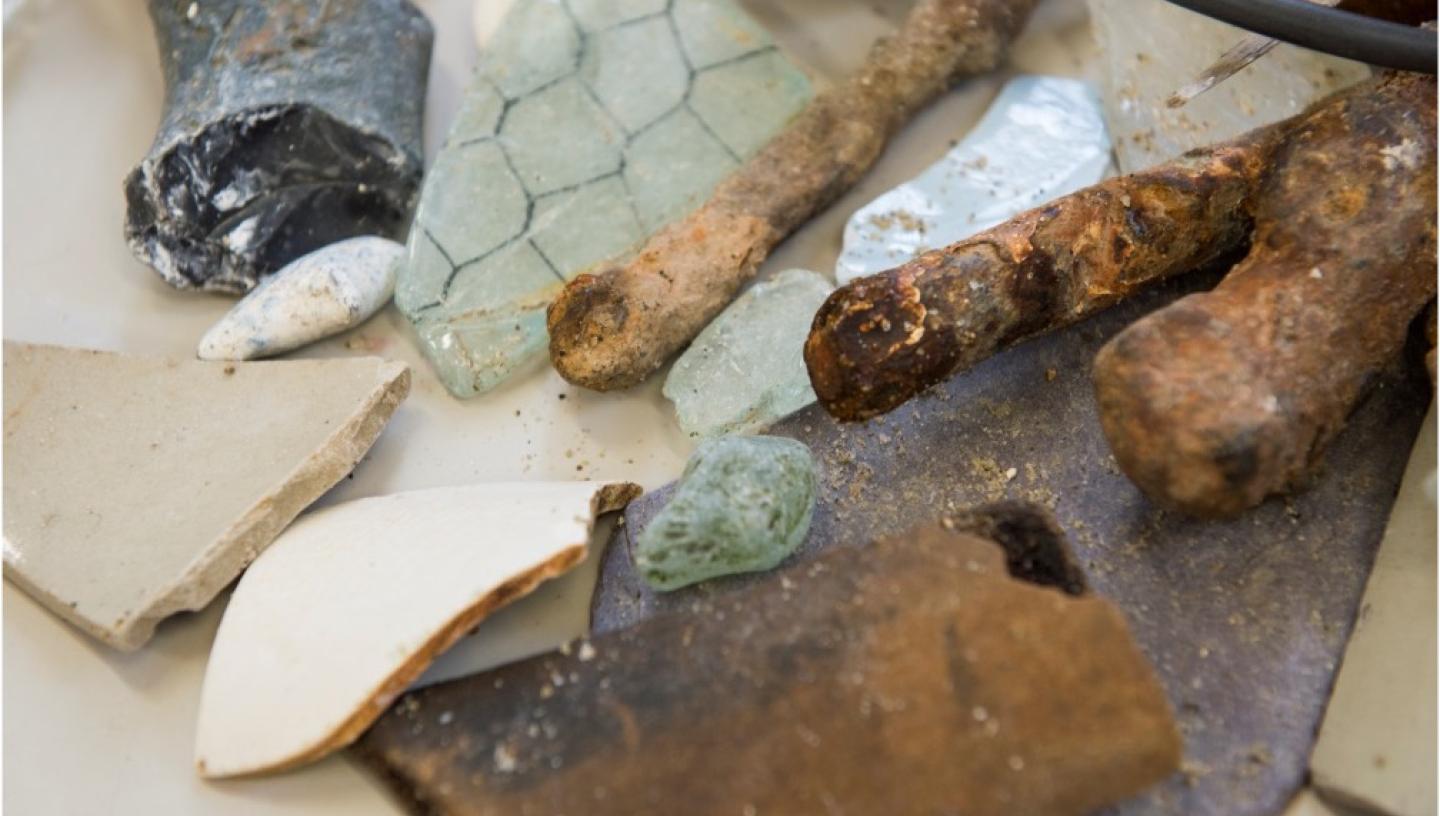
Mudlarking Weekend with Hands on History
To celebrate Totally Thames 2023, Royal Museums Greenwich is partnering with Hands on History for displays, talks and tours celebrating mudlarking
Important information for visitors
Until summer 2025, there is a new visitor route at the National Maritime Museum while we carry out essential improvements to the Museum's roof . Most galleries will still be open as normal, and special exhibitions are currently free for all visitors. However, the Great Map and AHOY! will be closed for the duration of the works. Find out more .
Essential Information
Mudlarking is the practice of searching for historical objects and artefacts in the river Thames.
These lost, forgotten and discarded objects offer a window into London’s rich history, and the muddy banks of the Thames foreshore are a treasure chest of invaluable finds.
Discover the ancestral Thames with Hands on History, a pop-up mudlarking festival held at the National Maritime Museum on 23 and 24 September.
London's mudlarks will display their favourite finds and private collections.
Discover the secrets of London's maritime past, experience Tudor artefacts recovered in front of Greenwich’s former Palace of Placentia , and share the thrill of finding a piece of history buried in the banks of the Thames.
A live programme of activity for all ages will animate the weekend, including a Storylark - your mudlarking museum tour guide, as well as a sculpture workshop, life drawing and creative discussions. For those interested in art history, a printed trail is available for visitors wishing to understand London’s maritime past through art.
A full programme of the weekend is below. All talks, workshops and tours are free but must be booked in advance on the Totally Thames Festival website .
The programme
Saturday 23 september.
Display of mudlarked objects on the Great Map
Mudlark Cinema
10 - 3pm | Lecture Theatre
A series of short films celebrating mudlarks, their finds and the ancestral Thames will play on rotation throughout the day.
Drop in table top workshops
Drop in | Great Map
‘Intention Boats’ with Remiiya Badru, artist and River Rambler. Pottery Sorting with Christine Webb.
Still life drawing workshop with Coral Pearce
11 am – 1 pm | Learning Space
In this two-hour class, mudlark Coral Pearce will help you develop your drawing skills, using real mudlarked objects as your inspiration.
2 - 3 pm | Start Point: Great Map
Join Rich Sylvester, Germander Speedwell and Remiiya Badru for a performative story walk connecting the objects displayed throughout the Museum on a walk beginning on the Great Map and ending in the Queen’s House.
Please sign up at the National Maritime Museum Parkside entrance ticket desk.

Artist talk: Foreshore Foundlings by Billie Bond
3.30 – 4.30 pm
Sculpture artist Billie Bond will discuss how her work as a contemporary crafter responds directly to the makers that came before, mediated through mudlarked finds.
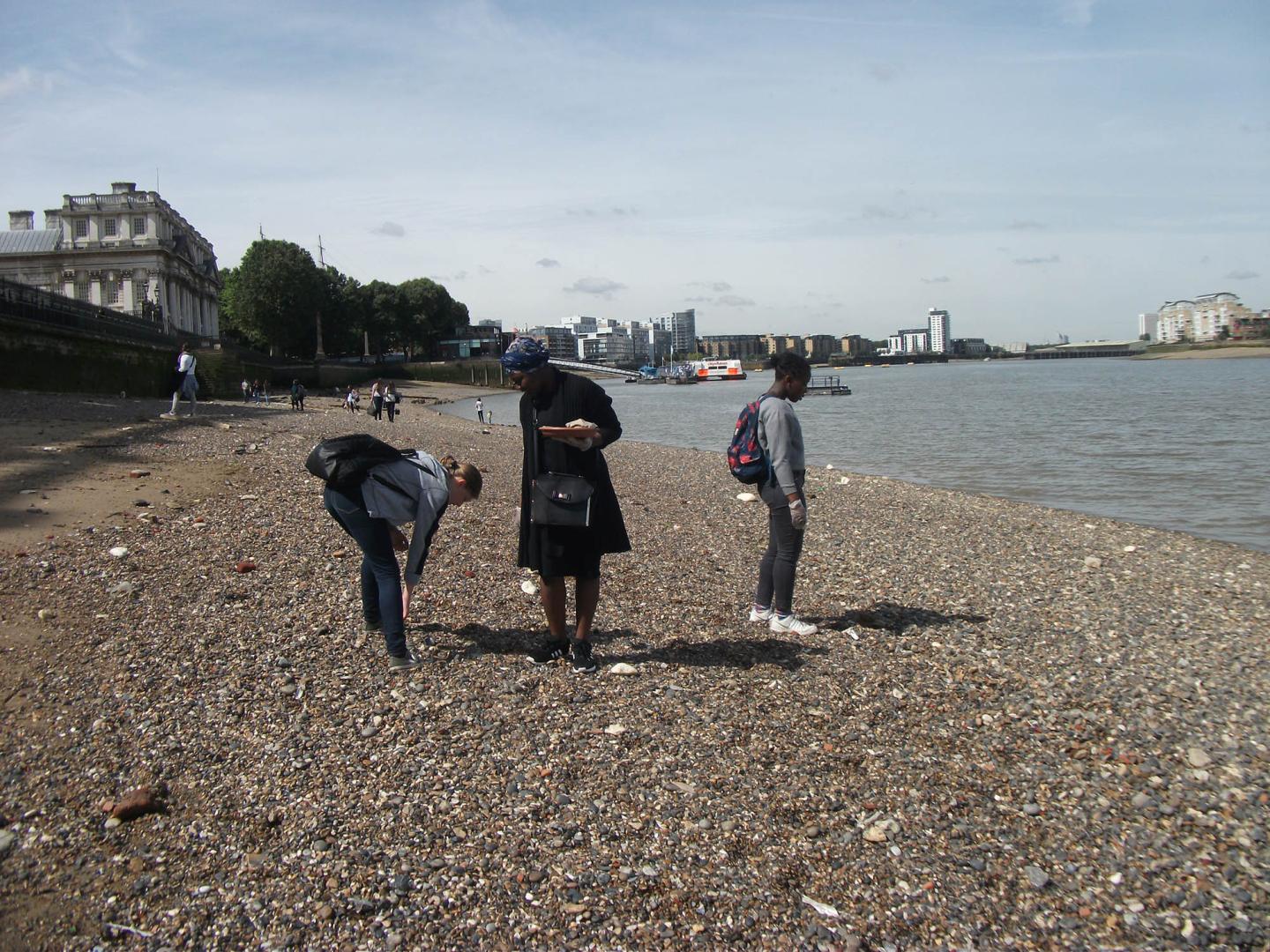
Sunday 24th September
Display of mudlarked objects on the Great Map.
A series of short films celebrating mudlarks, their finds and the ancestral Thames will play on rotation throughout the day
‘Intention Boats’ with Remiiya Badru, artist and River Rambler. Pottery Sorting with Christine Webb
11 - 12, and 2 - 3 pm | Start Point: Great Map
Join Rich Sylvester, Germander Speedwell and Remiiya Badru for a performative story walk connecting the objects displayed throughout the museum on a walk beginning on the Great Map and ending in the Queen’s House.
11 am - 1 pm | Learning Space
Get a hands-on insight into the making processes behind mudlarked finds with this sculpture workshop where you will create your own piece inspired by historic objects.
Panel discussion: Shipbuilding, Breaking and Maritime Greenwich
3.30 – 4.30 pm | Lecture Theatre
In this panel discussion, archaeologists from the Thames Discovery Programme share the personal stories that can be discovered within the objects, and places associated with London’s shipbuilding and shipbreaking industries, and share creative response to archaeological finds.
Book your free spaces now
Totally Thames Festival
This exhibition and talk is part of the Totally Thames Festival, an annual celebration taking place on, beneath and along the River Thames. Mudlarking walks and talks also feature during the festival. Check out all additional events, such as the StoryWalk and the Thames Discovery Programme foreshore walks, on the Totally Thames Festival website.
Visit the website
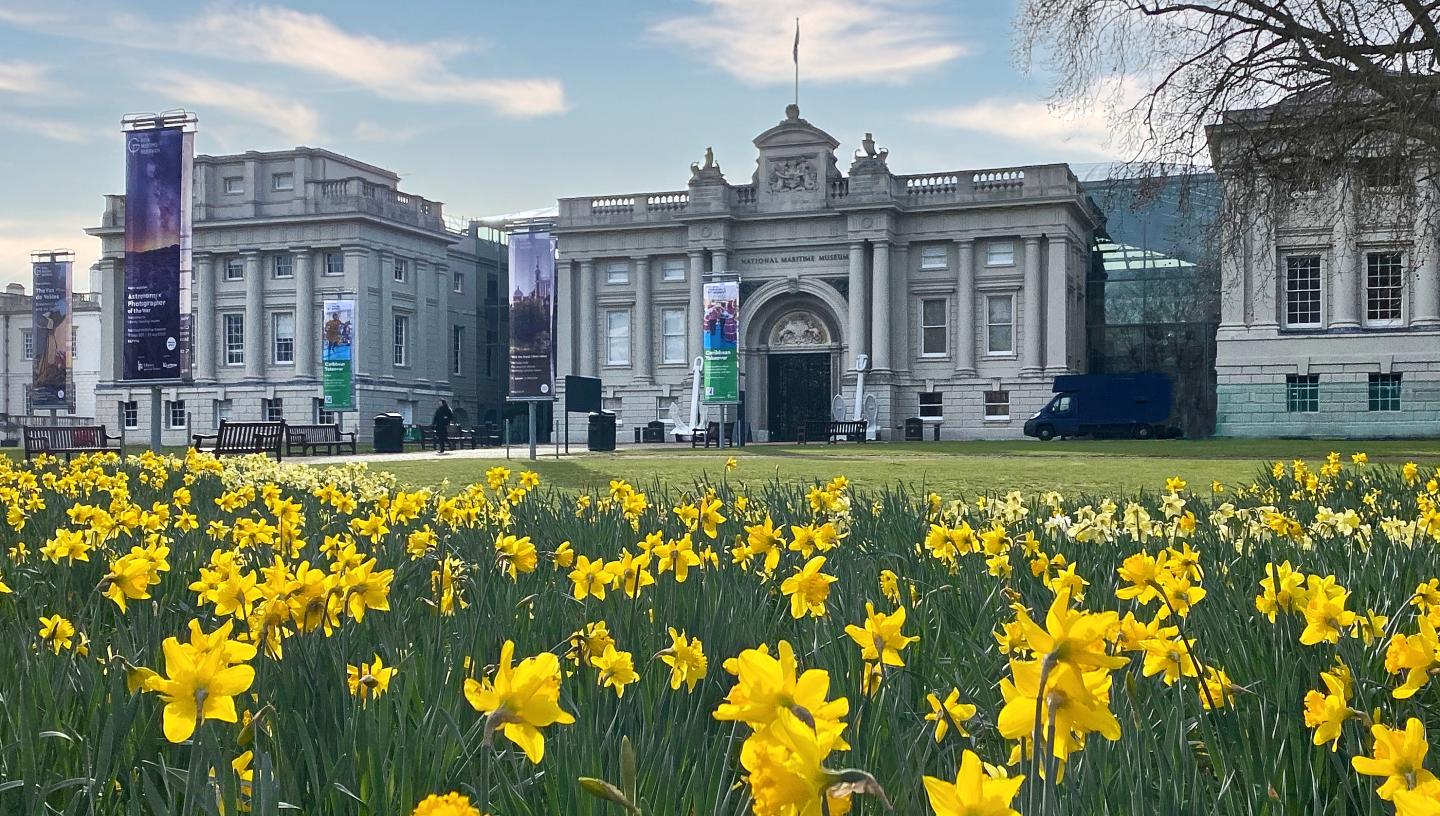
Visit the National Maritime Museum
More events at the National Maritime Museum.

Women of the RNLI

Astronomy Photographer of the Year
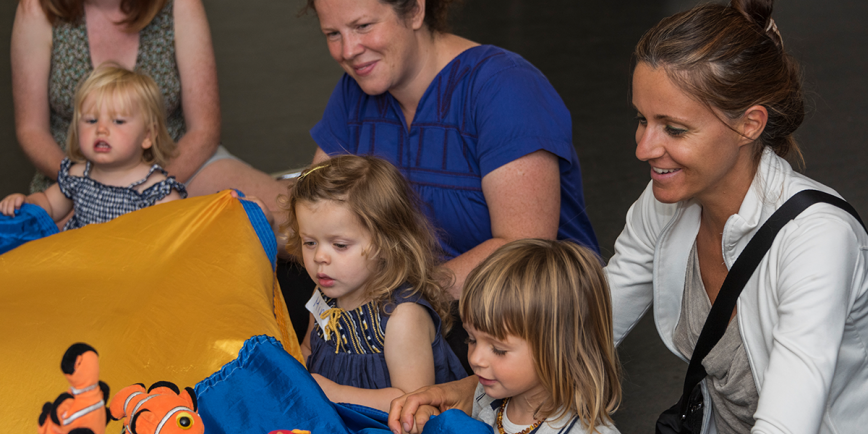
Play Tuesdays
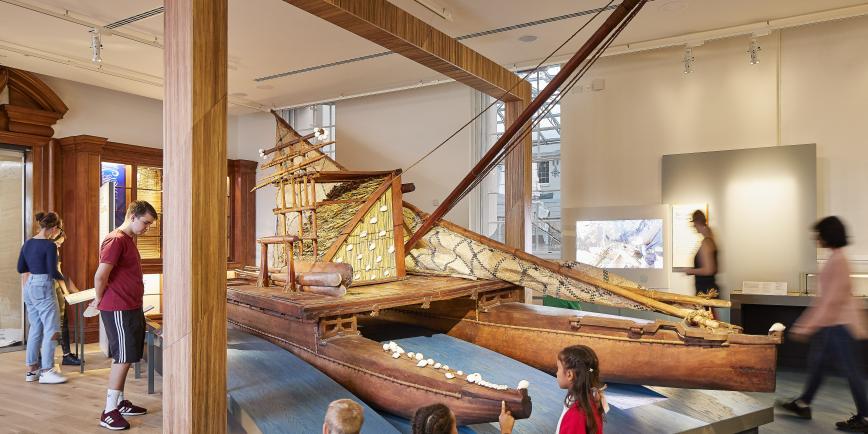
Members' Treasures Tours
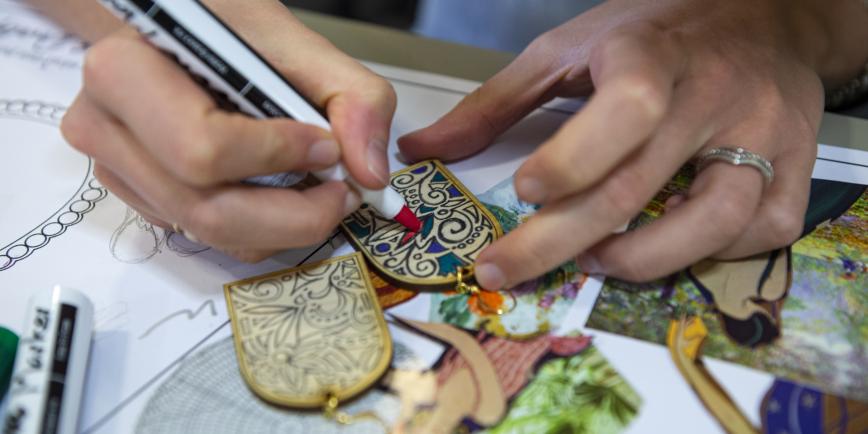
Saturday Art Club
Character Encounters

SENsory Sailors

LGBTQ+ Family Network
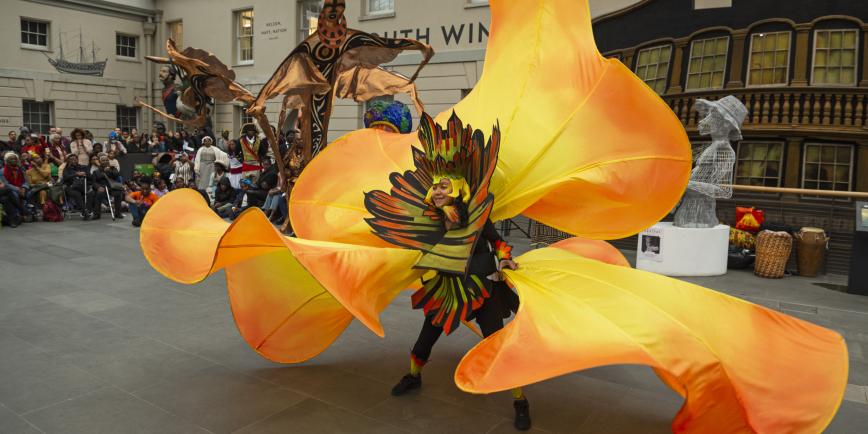
Caribbean Takeover
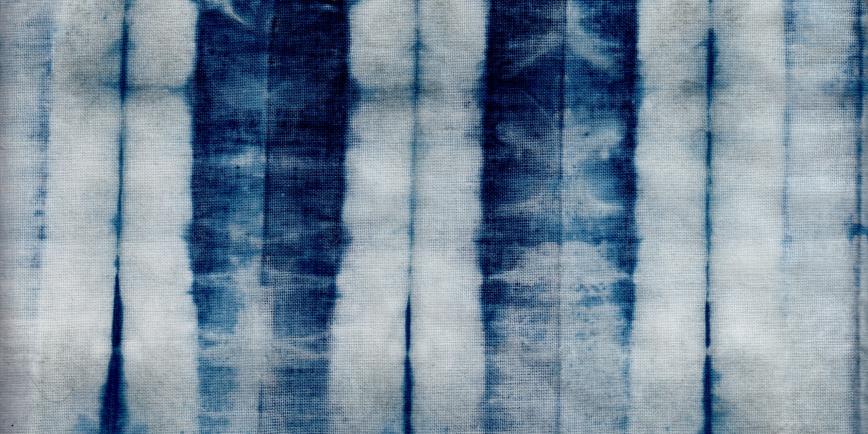
Indigo dyeing workshop with Abiola Onabulé
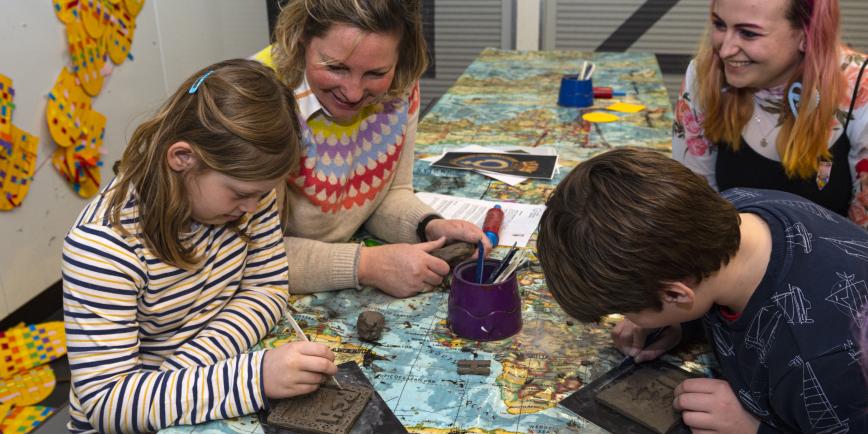
Safe Harbour
Bsl tour: women of the rnli.
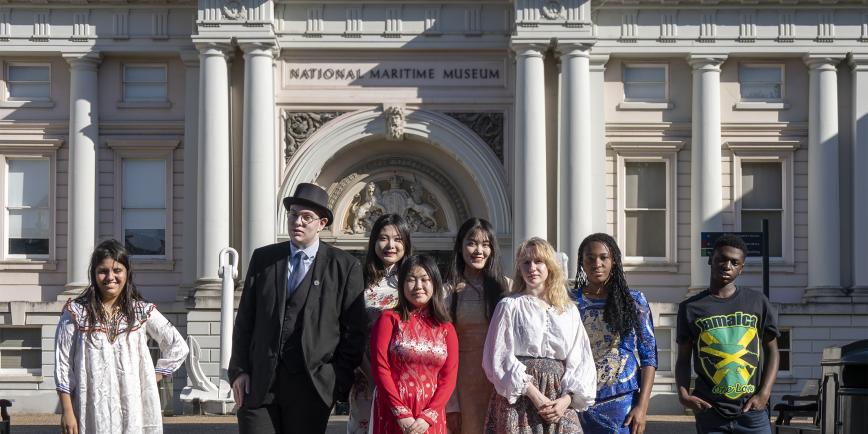
Youth Collective

World Oceans Day
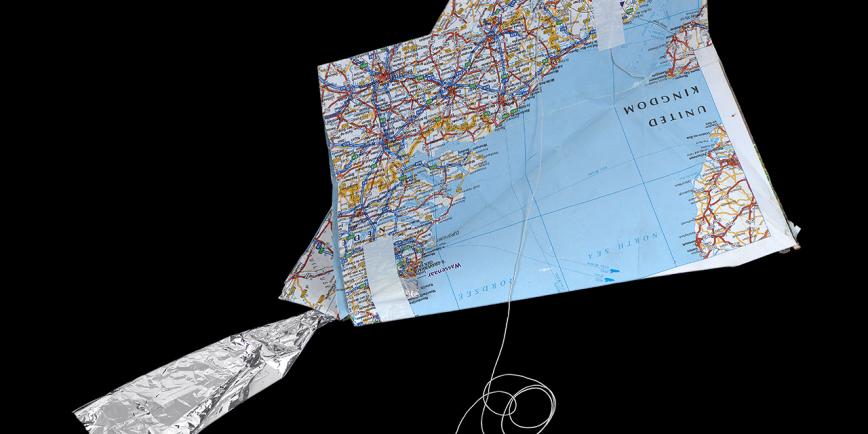
Refugee Week 2024

Windrush Day
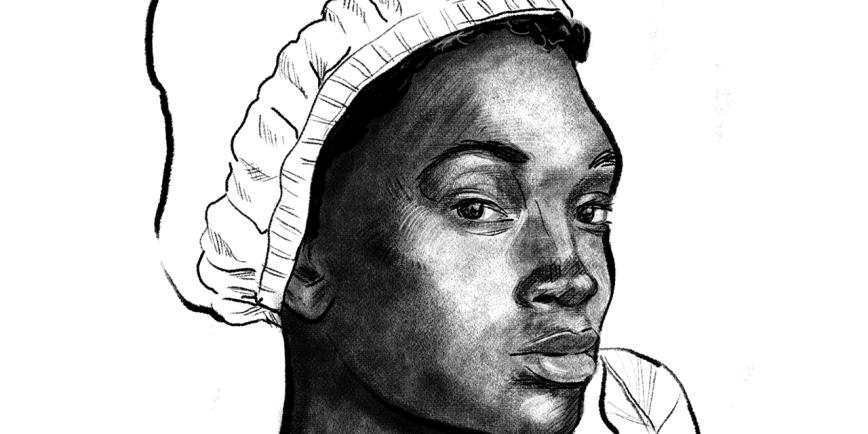
International Slavery Remembrance Day
Book tickets via the totally thames festival website.
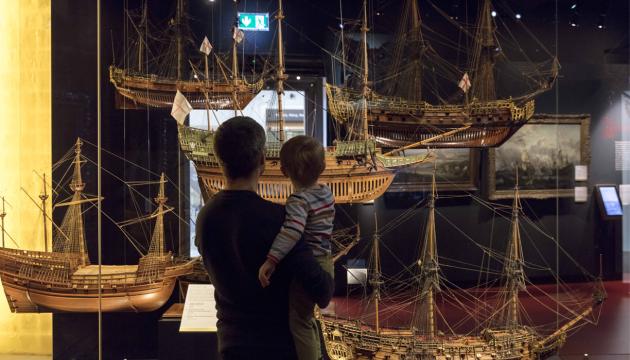
National Maritime Museum
- Guaranteed entry time
- Access to all free galleries and activities
- Special exhibitions free in 2024

MUDLARKING ON THE RIVER THAMES
Mudlarking is an old, very London specific form of amateur archaeology, where people can inspect the shores of the Thames in central London to find artefacts and relics from its long and extensive past. As there are rules, regulations and safety concerns about how this can be done, it is best to join one of the organised tours run by Thames Explorer Trust, who have the required permits and expertise.

A city as old as London has been built layer upon layer of human debris; discarded and lost objects and centuries worth of rubbish - the remains of meals eaten, pipes smoked, crockery smashed, coins lost, buttons broken and buildings crumbled. Two thousand years worth of detritus has fallen into the Thames, washing up every day on its grimy shores at the mercy of the strong estuary tides.
For centuries people have made a living combing this foreshore, one man's rubbish being another man's treasure is no truer than here, where an object dropped by a careless Roman can now be worth its weight in monetary or historical value.
Mudlarking is the ultimate way to get a know the capital city as a Slow Traveller - it forces you to really slow down, take your time and investigate the minutiae of the life of ordinary people from previous centuries. It is a hands on approach to being a visitor and you never know, you may well find something special and join the history books as a contributor to the archaeological knowledge of the city.
The Rules of Mudlarking
1. visual inspection only.
There are many rules in place about mudlarking, and it can be easy to fall foul of them. You cannot just go to a Thames beach and start poking around - that in itself is illegal. Even turning over a stone to look underneath is off limits. All you can do is walk along the beach and visually inspect - if you see something on the surface, you can pick it up to have a look. Metal detectors, trowels and spades are all completely forbidden.

2. Some areas are off-limits
There are some areas where you are not allowed to even pick anything up, such as Queenhithe Dock which is a scheduled ancient monument. Once an Anglo-Saxon dock, the remains of which have been found there, it is also where Charles II landed to survey the damage caused by the Great Fire in 1666. Other areas completely off limits, even for those with a permit, include anywhere near HMS Belfast , the London Eye and St. Katherine's Dock. What is rather unhelpful is that there are no signs anywhere telling you where you are not allowed to go.
3. Health & Safety
There are also Health & Safety issues to take into account. The estuary tides can be swift and sudden, and people have been stranded in the past with unfortunate consequences - there are not that many steps or ladders down to the shore. Experts also suggest always wearing waterproof gloves, as although the Thames is far cleaner than it ever used to be, it still contains sewage, and the foreshore where the objects are found is home to rodents of both the scuttling and flying variety.
4. Report Your Finds
The final thing to be aware of is that you must report any significant finds to the Museum of London under the Treasure Act 1996. If you join one of the guided tours then they can help you determine what is potentially significant, otherwise you'll have to be able to work it out yourself. It is also expected that you will leave behind your insignificant finds for other people to find. What will you really do with broken clay pipes and crumbling pottery anyway? It should stay where it belongs. The thrill is the hunt, not the acquisition.
Mudlarking with Thames Explorer Trust
The guided tours run by Thames Explorer are often in the evening, depending on the tides - you can find them all on Eventbrite. You all meet at a specific location on the edge of the Thames - in the case of the tour I went on it was next to the Glass Obelisk under the north end of the Millennium Bridge - an easy spot to find. We were a group of about 14 people, mostly tourists from around the world, including several children, as it is a very child-friendly activity. In fact our guide told us that children often spot the best items as they are closer the ground and have far better eye sight.
We were given a talk about mudlarking, the rules and regulations, health and safety, and then moved on to objects we were likely to find. There are some objects which are very common, such as clay pipes, oyster shells and animal bones. Our guide passed round some of her more impressive finds so we knew what to expect and which would help us with identification of our own.

Then it was down to the foreshore and we were told where we could and couldn't go, then left to wander on our own to see what we could find. It only took us a few minutes to realise that the area we were in was actually all artefacts and that there was very little sand or gravel - we were walking on pipe stems, oyster shells, animal bones and lots and lots of bricks. We swiftly moved from marvelling over clay pipe stems to trying to find a pipe with its bowl still attached, from finding Victorian pottery to trying to find medieval or even Roman pots.
We wandered across the foreshore, eyes becoming attuned to what to look out for, and passed a very pleasant hour as the sun set over the city, heads down and backs bent. Above us we could hear the sounds of office workers relaxing with a drink at the end of the day, loud guffaws and the clinking of glasses the backdrop to our silent search across the shore.

At the end of the session you can take your finds to the guide who will help you identify them, we all gathered around her like excited schoolchildren for our 'show and tell' session. We laid our treasures out on a big rock to take photos, then just left them there to be swallowed up by the next tide, so they could return to their watery resting place.
Objects you may find when Mudlarking

Clay pipes are very common on the shores of the Thames. You are only likely to find the pipe ends rather than the bowl, as they frequently snap. The thinnest ones you find are the oldest, from when tobacco was expensive. As it became more common and cheaper in price, the pipes became bigger as people could afford more tobacco per smoke. Some pipes were sold pre-filled for single use, so would be discarded in the river the way cigarette butts would be in later years.
Oyster Shells
Oysters were once the food of the poor, rather than the wealthy as they are now. Once consumed, the shells would be thrown away and they form a large part of what you will find. There are many with a square hole in them - the reason for this is still unknown, they were possibly some form of currency but it remains a mystery.
Animal bones
There are a lot of animal bones on the shore, mostly Victorian from when people would eat an animal and throw away the bones. I found some substantial bones from pigs and cows, and even a sheep's jawbone with a full set of teeth. When the Thames was densely populated with barges, before the advent of the trains for goods transportation, barge piers were constructed along the length of the Thames. These were flat bottomed and infilled with rubbish, which is why there are so many bones from Victorian meals.
You will find a wide range of bricks - London bricks as well as traditional red bricks. London has been rebuilt many times over and the remnants of this are all over the shore.
There are huge amounts of pot shards in amongst the rest of the detritus. The thinner the piece is, the newer it is, with most of what you will find being Victorian. It can apparently be quite hard to find Roman pottery - Roman Londinium was a lot smaller than London is now so don't expect to find Roman artefacts in every place you search.
Pottery Guides © Lara Maiklem Mudlarking
Going Mudlarking
Book your tickets through the Thames Explorer Trust >>
Related Posts
THE SHERLOCK HOLMES MUSEUM, LONDON
CELEBRATING AUTUMN EQUINOX WITH THE VIKING BOAT BURN AT BUTSER ANCIENT FARM
FITZROY HOUSE, LONDON: OFFICE OF AUTHOR L. RON HUBBARD
Try Mudlarking
Fancy a go yourself ? Click here to find out more
We are very proud to announce the official launch of the book “THAMES MUDLARKING: Searching for London’s Lost Treasures”.
The book tells the story of London and it’s inhabitants from pre history up to the present day. With unique access to the private collections of many Thames Mudlarks, this book includes some of the best examples of River Thames finds. Over 50 mudlarks have contributed to this book, and contains over 160 stunning photographs.
The book is available on Amazon , Kobo and all good online bookstores. A big thanks to the many mudlarks who contributed their incredible finds, stories and photos and illustrations for this book.
-----------------------------------------------------------------------------------------------------------------------------------------------------------------------------
---------------------------------------------------------------------------------------------------------------------
Mud God, Rock and Gander recently filmed an upcoming show for Channel 4 about British Heritage with Peter Davidson of Dr Who and All Creatures Great And Small fame. Lovely chap and in this pic he is holding a custom made trowel made for him by Gander. Click the image below to see our bit or head over to the video page to see more of our films.
Bill Bailey finds Saxon Hoard in Mud God's beard
-----------------------------------------------------------------------------------------------------
Oz and I bumped into this Chap the other day. He said he was out looking for somewhere interesting to run and saw that the tide was out. Very nice chap and he was fascinated to know all about Mudlarking and hear about some of the finds we have had.
Russell even had some nice words to say about us on his radio show. Click below to have a listen.
-----------------------------------------------------------------------------------------------------
--------------------------------------------------------------------------------------------------------
Search has been busy finding more Canon carriage cheeks. These have now been recorded with The Thames Discovery Programme and have been drawn and plotted and the area is now under protection. Possibly French or Dutch, Search has been told that some of the timbers in the area are from known ships that were taken by the English during battle. More info to come...
---------------------------------------------------------------------------------------
Jimbo's amazing (almost) complete Bellarmine Jug find is now in the River Finds section. Thanks to Sharon for taking pics of the whole process. Another one-off from T+F. Well done Jimbo!!
More videos on our video page
------------------------------------------------------------------------------------------------
Thames and Field are a community of friends who Mudlark on the famous muddy
Thames foreshore for our liquid past.
Searching by eye, scraping or detecting, these websites are dedicated to our passion
for finding evidence of our past history.
All of the artifacts you will see on these pages have been found by club members and
almost all have been found by “eyes only” which involves no digging at all thus avoiding
any damage to the foreshore. We are eco friendly finders of London’s liquid history and a mega friendly club too.
Thames and Field are one of the most prolific recorders of finds in the country for P.A.S. The Portable Antiquities Scheme. These are recorded at each monthly meeting by Kate Sumnall our finds liason officer from The Museum Of London.
Remember... don’t stash it... P.A.S. it! Your find is worthless without provenance so record it.
Our club is a place where novices Mudlarks and experts can get together and learn
about this fascinating hobby.
Even newbies will have a story to tell and are always welcome to come and join us. Especially after they have paid their club funds. We’ll be like best buds then.
And last but not least... Mudlarking will be like nothing you’ve ever done before. It’s a way of life really. You can get down there an hour a week or twice a day 7 days a week... the choice is yours, but be safe, record your finds and best of all you’ll get to have a grin with a great bunch of mates in the mud.
---------------------------------------------------------------
Lots of stuff from all three seasons on our Mud Men Page or click the link in the sidebar.
Also check out the Mud Men facebook page for news and updates.
The History Channel's official Mud Men site can be found here
MUD MEN VIDEOS
To see out takes and clips from Series 1+2 and 3 you can visit The History Channel's YouTube page here .
You can also enjoy some episodes in Spanish too.
--------------------------------------------------------------------------------------------------------------------------------------------------------
Woolwich John's incredible Richard III Boar Mount
PAS reported in December last year
Found on the Thames foreshore was this copper-alloy mount in the form of a boar,
which was reported to the local Finds Liaison Officer. The mount shows the boar
chained, collared and wearing a crown, and it has a crescent (presumably heraldic) above one of its legs.
Given the renewed interest in Richard III, after the apparent discovery of his remains in Leicestershire, it is wonderful to have a London find associated with the king. The mount is
very similar to a number of boar badges which have been reported Treasure over the past few years, which were made for followers of Richard III (of York), as Duke of Gloucester, during the Wars of the Roses. Richard took the white boar as his sign; 'bore' may havealso been an
anagram of Ebor, the Latin for York.
Michael Lewis , Deputy Head of P.A.S said:
"Badges in the form of a boar were ordered for use at Richard III's coronation
(in July 1485) and also for the investiture of his son, Edward, as Prince of Wales
(in September). However, it is not certain what the mount from London came from,
maybe a piece of furniture or was used to decorate an item of leather once owned
by a supporter of Richard III, or possibly even the king himself"
You can see the full PAS record of it here
November 2014
Woolwich John's Boar badge gets a mention in this article about Norbury church, Derbyshire.
----------------------------------
Ever wondered what the river would look like if it was empty?
A little bit of artistic license used here I feel as the foreshore seems to have completely disappeared. Still quite a mad visual. I reckon I'd be straight up to Mud God's elusive canon spot. Then again saying that I bet we still wouldn't find it!!
VITRUVIAN MUD GOD
The Canon of Proportions..??
Or the proportion of Canons..??
- Options for schools & colleges
- School trips to London
- School outreach workshops
- Online Learning via Zoom
- Thames Explorer boat trips
- Frequently Asked Questions
- Universities
- Guided tours
- Private foreshore tours
- Self-guided walks
- Gift certificates
- Work with us
- Contact & Book
River education programmes along the tidal Thames since 1988
Explore the thames through hands-on fieldwork, outreach sessions, online lessons, boat trips, walks and guided tours, discover a range of educational tours for adults and families, curriculum focused school trips to london, guided and self-guided tours and walks along the thames river foreshore, schools, colleges, and universities.

Join us for an exciting programme of curriculum-linked activities for primary schools, secondary schools, and higher education using the river as an outdoor classroom.

Outreach workshops
KS2 outreach workshops (including our free PLA workshop for qualifying schools) looking at the river, its wildlife, human impacts, its geography and the role the port made in making London a major city.

Online learning via Zoom
Experience our key learning programmes delivered remotely. Sessions are delivered by one of our highly skilled team using Zoom, or similar, and feature a reusable activity pack sent to your class.

Thames learning boat trips
Thanks to a collaboration with the Golden Salamander we are now able to offer unique learning trips on a boat. Our programmes combine geography and history learning with a boat trip

Collaborative university field trip programmes
Thames-based fieldwork in geography, history, biology, and ecology. Work with our team of experts to answer your London fieldwork needs.
Contact Thames Explorer
Contact us to make a booking or for more information about any of our school, college or university programmes.
020 8742 0057
Submit an enquiry.
Our friendly team is here and ready to help you with your enquiry.
Tours and walks along the Thames foreshore

Scheduled tours along the Thames foreshore
Including our popular Footsteps of Mudlarks programme – adults and families can learn more about the Thames archaeology or ecology with one of our expert guides.

Private tours for groups to explore the foreshore
Take a private tour if you have a specific interest in the history or ecology of the Thames or are looking for a more personal tour for yourself or your group.

Self-guided walks – Thames Explorer Challenge
Take the free Thames Explorer Challenge and discover a fascinating Thames walk created by a top team of archaeologists, ecologists, geographers, and historians.
Introducing you to the work of the Thames Explorer Trust
Established in 1988, the Thames Explorer Trust is an educational charity. We want everyone to have the chance to explore and get to know the River Thames from Kew to Greenwich and beyond. We offer: River visits and remote learning packages for schools, community groups, families, and adults; and a consultancy service, offering expert advice on a range of Thames issues.

Our Funders
Our supporting partners.
Our activities and events are offered at these key sites of interest along the Thames.
The London Museum of Water and Steam Brentford; Chiswick Pier Trust; Linden House Hammersmith, Fulham Palace; Museum of London Docklands; Old Royal Naval College Greenwich, Trafalgar Rowing Club Greenwich and Hermitage Moorings.
- Privacy Overview
- Strictly Necessary Cookies
- Website Satistics
- Cookie Policy
This website uses cookies so that we can provide you with the best user experience possible. Cookie information is stored in your browser and performs functions such as recognising you when you return to our website and helping our team to understand which sections of the website you find most interesting and useful.
More information about our Privacy Policy
Strictly Necessary Cookie should be enabled at all times so that we can save your preferences for cookie settings.
If you disable this cookie, we will not be able to save your preferences. This means that every time you visit this website you will need to enable or disable cookies again.
This website uses Google Analytics to collect anonymous information such as the number of visitors to the site, and the most popular pages.
Keeping this cookie enabled helps us to improve our website.
Please enable Strictly Necessary Cookies first so that we can save your preferences!
More information about our Cookie Policy
Tha rate includes: double/twin occupancy, full board catering, excursions as per programme (including local guide services and entrance tickets), accommodation and catering for a guide-interpreter and a driver, transportation services - 4 days (1-2 pax - 1st class car with a/c, 3-9 pax - 1st class mini-van with a/c), services of guide interpreter.
Reservation Terms and Conditions

IMAGES
VIDEO
COMMENTS
Scheduled walks for May and June are due to be posted 5pm April 4th. In the Footsteps of Mudlarks - guided tours along the Thames foreshore. Book tickets for one of our two hour archaeology guided tours on London's River Thames foreshore. See availability below and book our latest events.
Mudlarking Tours and Guided Walks The Thames Discovery Programme, a nonprofit community archaeology organization, offers occasional guided walks of archaeologically significant areas of the foreshore. Thames Explorer Trust offers guided mudlarking expeditions at the Millennium Bridge, Rotherhithe and Greenwich. Thames and Field has frequent mudlarking tours open to the public, led by Steve ...
Mudlarking is "the activity of searching the mud near rivers trying to find valuable or interesting objects." ( source) The term dates back to the 18th and 19th centuries, referring to the people - "mudlarks" - who used to search the river for salvageable items that could be of value. In more modern times, mudlarking is a hobby that ...
Thames Explorer Trust: Mudlarking Tour . Thames Explorer Trust. Join us for a fun mudlarking session to discover the history of the Thames. Add to festival planner. Dates and Times. Fri 3rd Sep 2021. 4pm - 6pm. City of London. Obelisk under Millennium Bridge. Millennium Bridge North Bank,
CONTACT THE MUD-GOD ON [email protected]. 'I always wanted to try mudlarking so contacted Steve "Mud God" Brooker from the history channels Mud Men and other television programs associated with the river Thames and registered mudlark & tour guide. My friend from another department in the museum had gone on one of his one to one teaching ...
Another way to connect with fellow mudlarks is by joining a mudlarking tour. These tours, led by experienced mudlarks like Lara Maiklem and Steve Brooker, are a great way to learn about the history of the Thames and get some hands-on experience with mudlarking. The Thames Explorer Trust offers a variety of mudlarking tours throughout the year.
Mudlarking on the Thames foreshore at Greenwich, which has a notable maritime history. Photo: Jean Cuomo/Shutterstock.com. Tell me about guided tours. The Thames Explorer Trust's regular tours provide a legitimate way for those without permits to search the foreshore. Participants can find and handle artefacts and have them identified by ...
Safety. The most important information you need for mudlarking safely is found on the daily tide tables. The Thames rises and falls by more than seven meters (about 23 feet) twice daily as the tide comes in and out, and the water is cold. Check the exit points because the river rises very quickly and has an exceptionally strong current.
Mudlarking Tours in London. If you are new to mudlarking, a tour is a great way to get started. The Thames Explorer Trust offers guided tours along the Thames foreshore covering Greenwich, Wapping, Rotherhithe, and the area around the Millennium Bridge. You don't need a permit to join, and the experienced staff will help you find and identify ...
Mudlarking Tour along the Thames. Thames Explorer Trust. Come mudlarking with us on the foreshore in Chiswick and find archaeological artefacts revealed by the River Thames. Add to festival planner. Dates and Times. Sat 25th Sep 2021. 12pm - 2pm. Hounslow. Chiswick Pier Trust.
Mudlarking Regulations. If you want to go mudlarking on the Thames you will either need to obtain a permit, or join a guided tour. At the moment the Port of London Authority have stopped issuing new permits, to protect the historical integrity of the river bed. Unless you already have a permit therefore, a tour is the only option. Permit Holders
What To Expect. Discover the fun activity of mudlarking, or beachcombing for washed up objects along the foreshore of the River Thames during low tide, on this hands-on excursion with a local guide and a small group of no more than 15 people. Your guide will contact you to provide the location and time, which changes throughout the year.
Book one of our knowledgeable staff for you or your private group (maximum group size 25) for 2 hours. Private explorations can be tailored to your needs and take place all year round on the day of your choice (staff and tide allowing). People book for many reasons including birthdays (both children and adults), special occasions, corporate ...
The book tells the story of London and it's inhabitants from pre history up to the present day. Nick Stevens and Jason Sandy have been given unique access to the private collections of many Thames Mudlarks, allowing them to show some of the best examples of each artefact. Over 50 mudlarks have contributed to this book, which contains over 160 ...
Date and Times. 23 - 24 September 2023, 10am - 5pm. Prices. Free. Book your free space on the Thames Festival Trust Website. Mudlarking is the practice of searching for historical objects and artefacts in the river Thames. These lost, forgotten and discarded objects offer a window into London's rich history, and the muddy banks of the Thames ...
Mudlarking is an old, very London specific form of amateur archaeology, where people can inspect the shores of the Thames in central London to find artefacts and relics from its long and extensive past. As there are rules, regulations and safety concerns about how this can be done, it is best to join one of the organised tours run by Thames Explorer Trust, who have the required permits and ...
Nowadays, mudlarks have a much-improved reputation - the twenty first century mudlarks of the Thames foreshore scour the mud and debris for stories of the past. Bits of broken pottery, clay pipes pieces, coins, buckles, pins, tiles, bones and much more all tell the story of London's history. Not the story of kings and queens but one of ...
With unique access to the private collections of many Thames Mudlarks, this book includes some of the best examples of River Thames finds. Over 50 mudlarks have contributed to this book, and contains over 160 stunning photographs. The book is available on Amazon, Kobo and all good online bookstores. A big thanks to the many mudlarks who ...
Scheduled tours along the Thames foreshore. Including our popular Footsteps of Mudlarks programme - adults and families can learn more about the Thames archaeology or ecology with one of our expert guides. View guided tours. Private tours for groups to explore the foreshore.
Walking walk through the city of Pushkino, Moscow region. The distance from Pushkino to Moscow is only 20 kilometers.Timecodes:00:00 - Pushkino Embankment03:...
During this tour you will visit Sergiev Posad, Vladimir and Suzdal. These towns are old: Sergiev Posad, the first town you will see, grew up in the 15th century around one of the greatest of Russian monasteries, the Troitse-Sergieva (Trinity) Lavra. Vladimir was founded in 1108 and Suzdal was first mentioned in chronicles in 1024.
You'll be visiting Suzdal and Vladimir: two UNESCO World Heritage sites that are renowned for their bucolic landscapes, scenic white-stone buildings, and traditional way of life. Trade the city for the Golden Ring on this accessible, full-day tour. Visit UNESCO-listed Suzdal and Vladimir, all in one day. Round-trip transit directly from your ...
Get out of Moscow for the day and experience the rural Russian heartland on this private tour of the "Golden Ring". Travel by fast train, with plenty of space to move around. You'll head to Vladimir and nearby Suzdal, where you'll enjoy a guided tour of highlights including cathedrals, museums, gardens, and viewpoints. Learn about Russian history and experience the slower pace of ...